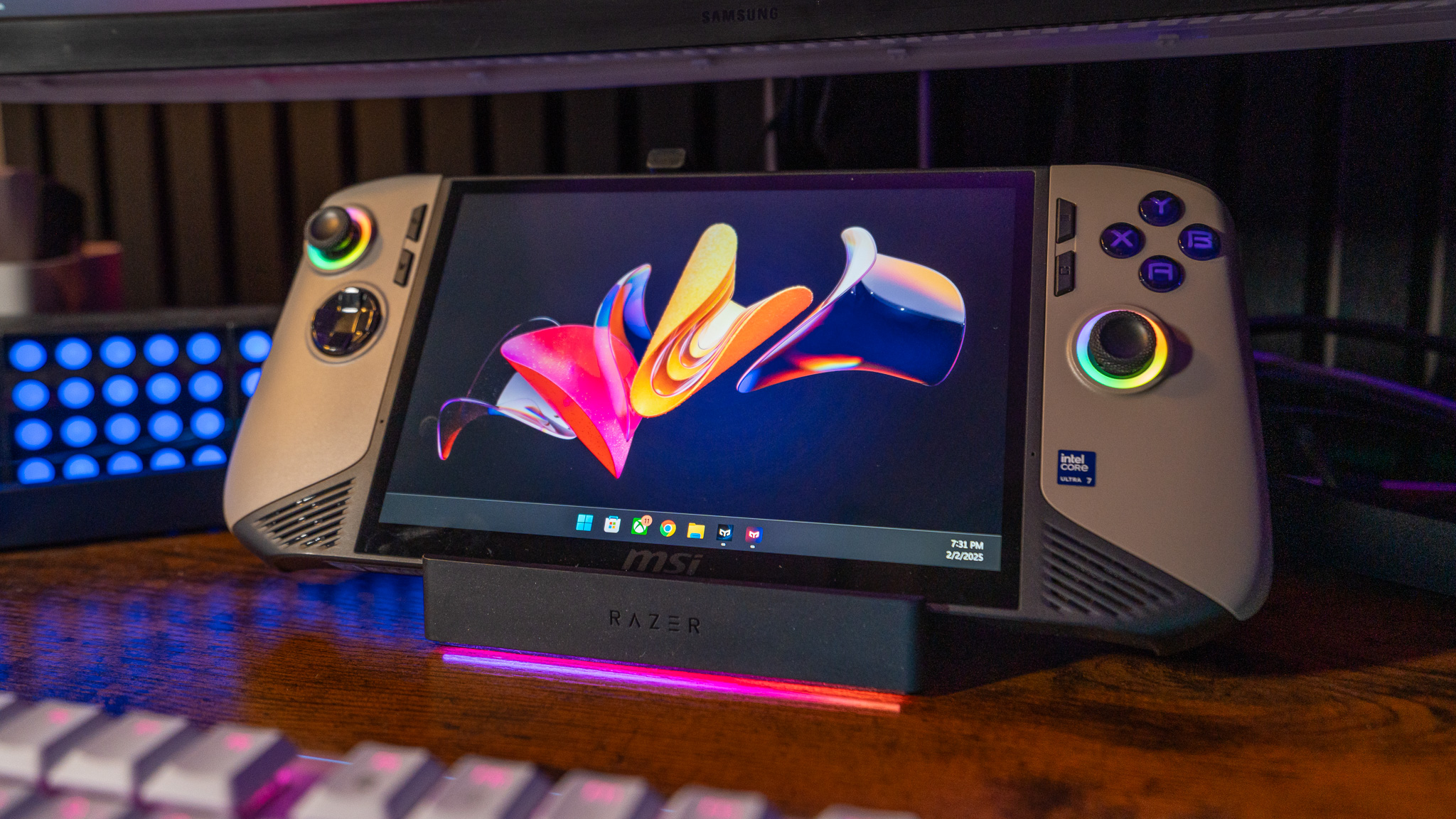Tom's Guide Verdict
The Razer Handheld Dock Chroma is a sleek and functional docking solution for your gaming handhelds that offers a solid range of ports, two viewing angles, and a touch of RGB flair. While it has all the connectivity for the essentials, it lacks HDMI 2.1 and USB-C 3.1. If you’re already invested in Razer’s ecosystem and want a dock that syncs seamlessly with your lighting, this is a great option — just be prepared to pay a premium.
Pros
- +
Customizable RGB lighting with Razer Chroma
- +
All the connectivity you probably need
- +
Two viewing angles
Cons
- -
Expensive compared to similar docks
- -
No HDMI 2.1 support
Why you can trust Tom's Guide
With the increased popularity of the best gaming handhelds, it’s no surprise that Razer wants a piece of the action. Instead of jumping in with its own device, Razer is starting with an accessory: the Razer Handheld Dock Chroma. This RGB-lit docking solution is designed to turn your handheld into a desktop replacement, letting you quickly connect peripherals and an external display — all while adding a touch of Razer’s signature lighting that seamlessly integrates into its ecosystem.
Even without faster connectivity options like HDMI 2.1 and USB 3.1, the Razer Handheld Dock Chroma offers enough ports to cover the essentials. While it’s primarily aimed at Windows handhelds like the MSI Claw 8AI+ and ASUS ROG Ally X, it also works with devices like the Nintendo Switch and even iPads, though without access to Razer’s advanced Chroma lighting sync. That said, Razer includes a button on the side of the dock to cycle through some built-in lighting presets.
Beyond connectivity, the dock offers two viewing angles (45° / 75°), making it easier to use your handheld’s built-in display for more comfortable gaming sessions—whether you’re at a desk with an external mouse and keyboard or using a controller. That said, this premium experience comes at a cost, as the Razer Handheld Dock Chroma is priced higher than many alternatives. Still, for those invested in Razer’s ecosystem, it’s one of the best-looking docks you can get for your handheld today.
This Razer Handheld Dock Chroma review will help you decide if it’s the right dock for your gaming setup and whether its premium price is justified by its design and features.
Razer Handheld Dock Chroma: Cheat Sheet
- What is it? A premium handheld gaming dock with RGB lighting, supporting up to 85W charging and a range of ports for connecting peripherals and displays.
- Who is it for? Gamers who prioritize aesthetics and want to integrate their dock into the Razer Chroma ecosystem. It’s ideal for those using handheld consoles like the Steam Deck, Switch, or MSI Claw and want a sleek, customizable setup.
- What does it cost? The Razer Handheld Dock Chroma costs $79.99.
- What do we like? Its premium build and folding design, and its Chroma lighting effects that sync with other Razer hardware.
- What don’t we like? It's pricey compared to alternatives with similar or better connectivity, and its RGB lights are only on the front and aren't as useful if you don't own other Razer accessories.
Razer Handheld Dock Chroma: Specs
| Connectivity | 3x USB-A Gen 1 (5Gbps)1x Gigabit Ethernet1x HDMI 2.0 |
| Viewing Angles | 45° / 75° |
| Controls | Cycle between lighting effects |
| Software | Razer Synapse, Razer Chroma RGB |
Razer Handheld Dock Chroma: The ups
If you’re looking for a portable dock that not only connects your gaming handheld —like the ASUS ROG Ally X or MSI Claw 8AI+ — to USB peripherals and a TV or monitor but also adds some flair, the Razer Handheld Dock Chroma delivers with its RGB lighting. A thin light bar at the front illuminates from the bottom, matching the brightness of Razer’s other peripherals. However, its impact on your setup depends entirely on where you place it — more on that in a bit.
Premium build and folding design
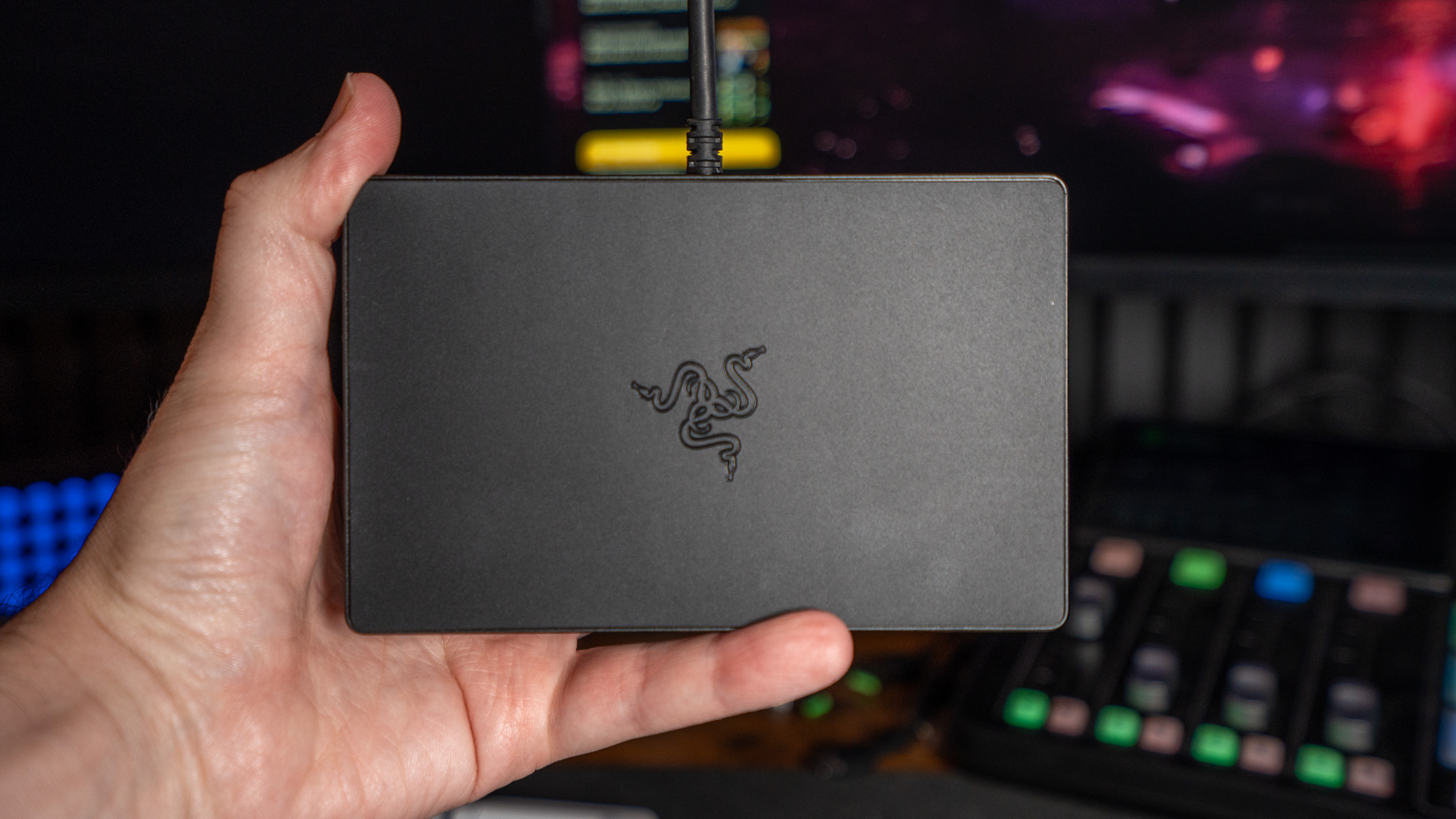
Right away, the Razer Handheld Dock Chroma stands out from the sea of generic plastic docks flooding the market. With its mostly aluminum build, it has a solid weight to it and feels premium, matching the build quality of Razer’s other hardware. It has rubberized feet to keep it from sliding on your desk and within the wedge that holds my MSI Claw 8AI+ snugly in place on my desk. While the all-black finish is the only color option available, I’d love to see a white version to better match my other peripherals.
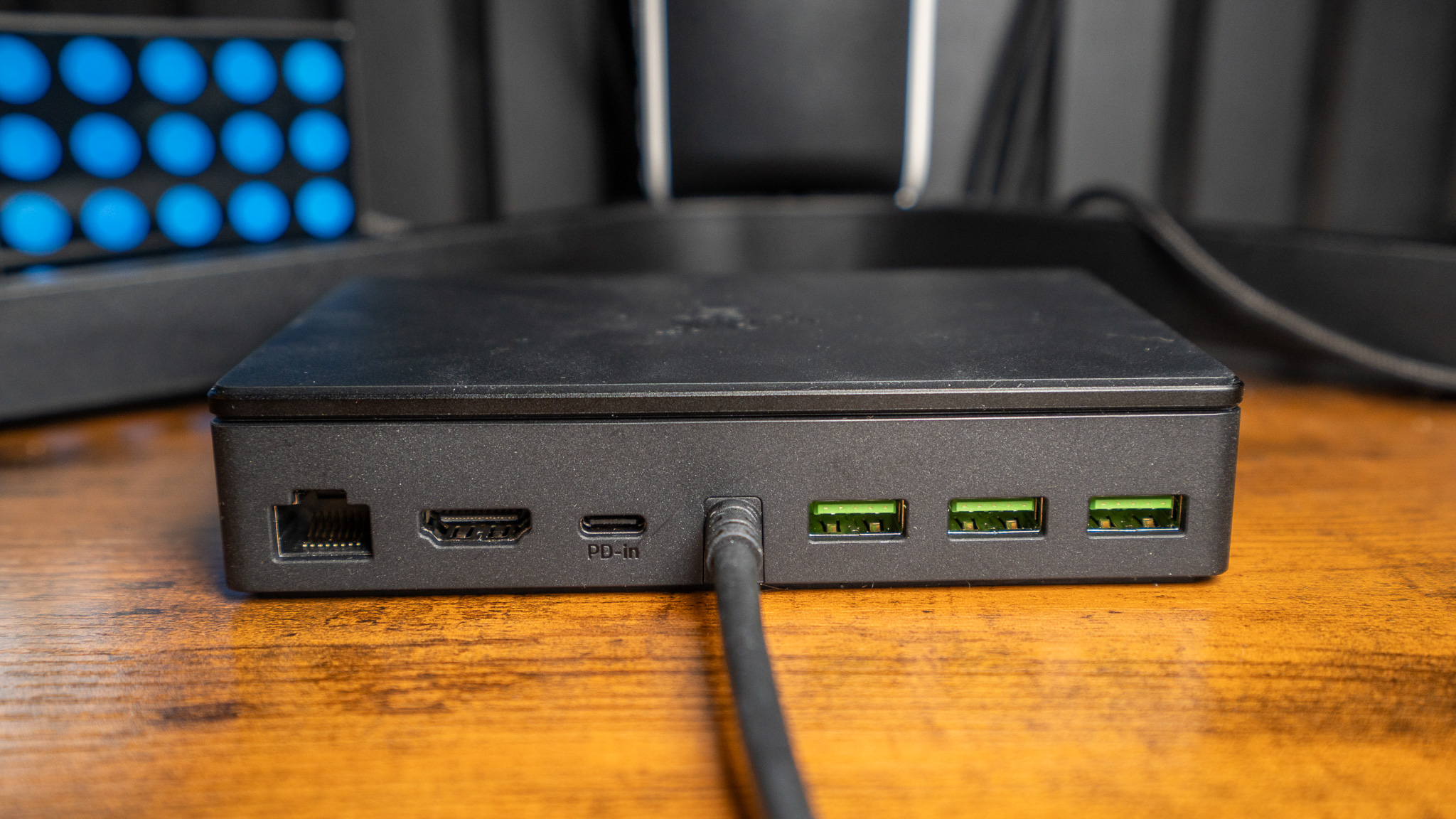
For $80 you’re getting a 100W PD dock with support for up to 85W to your handheld or tablet and the rest going to your connected USB devices, of which we have three USB-A Gen 1 (5 Gbps) ports, a gigabit Ethernet port and HDMI 2.0.
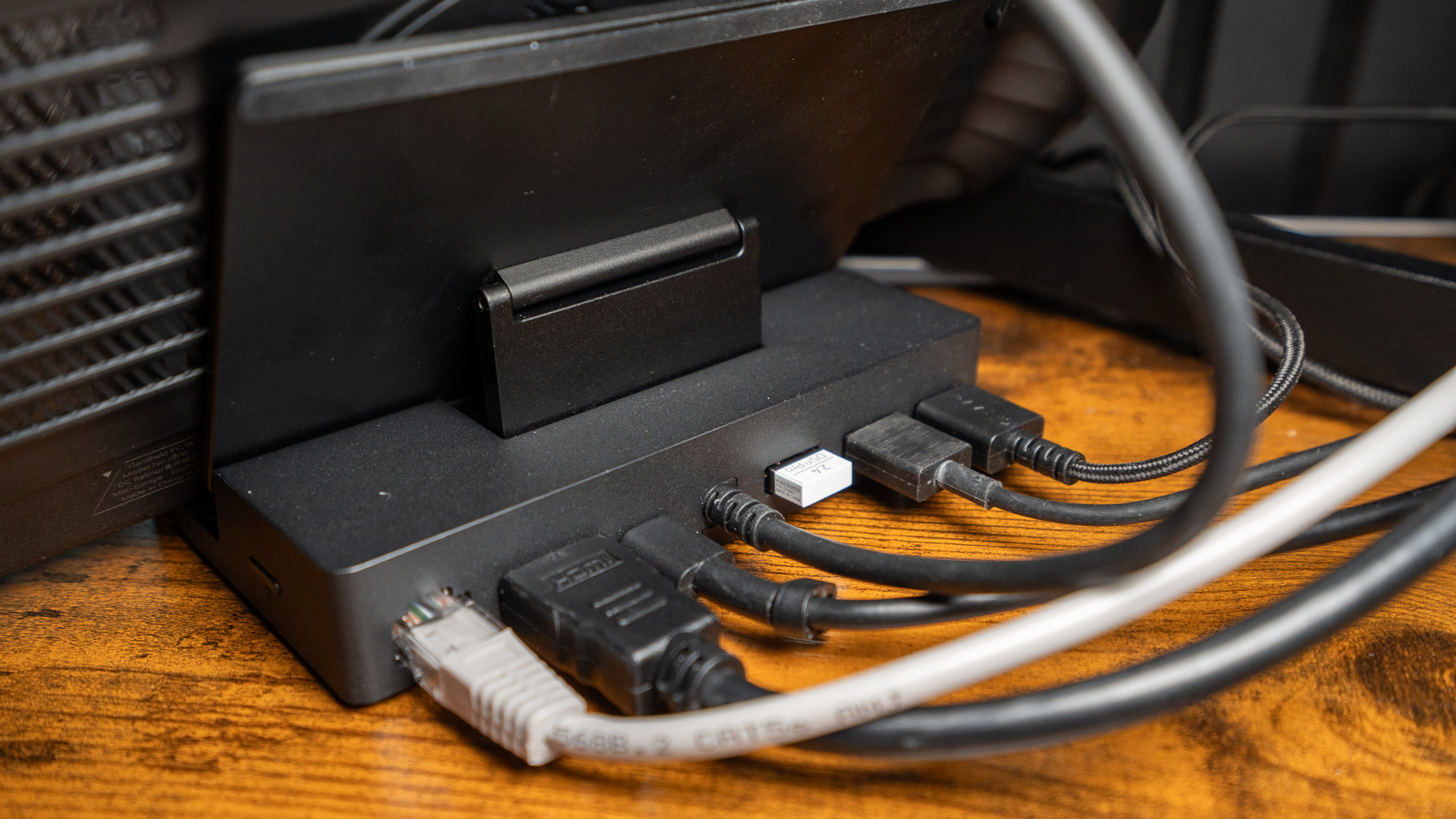
The dock uses a foldable back panel, which allows it to flatten for storage, or when connected, props up your handheld at either 45 or 75 degrees, giving you extra flexibility.
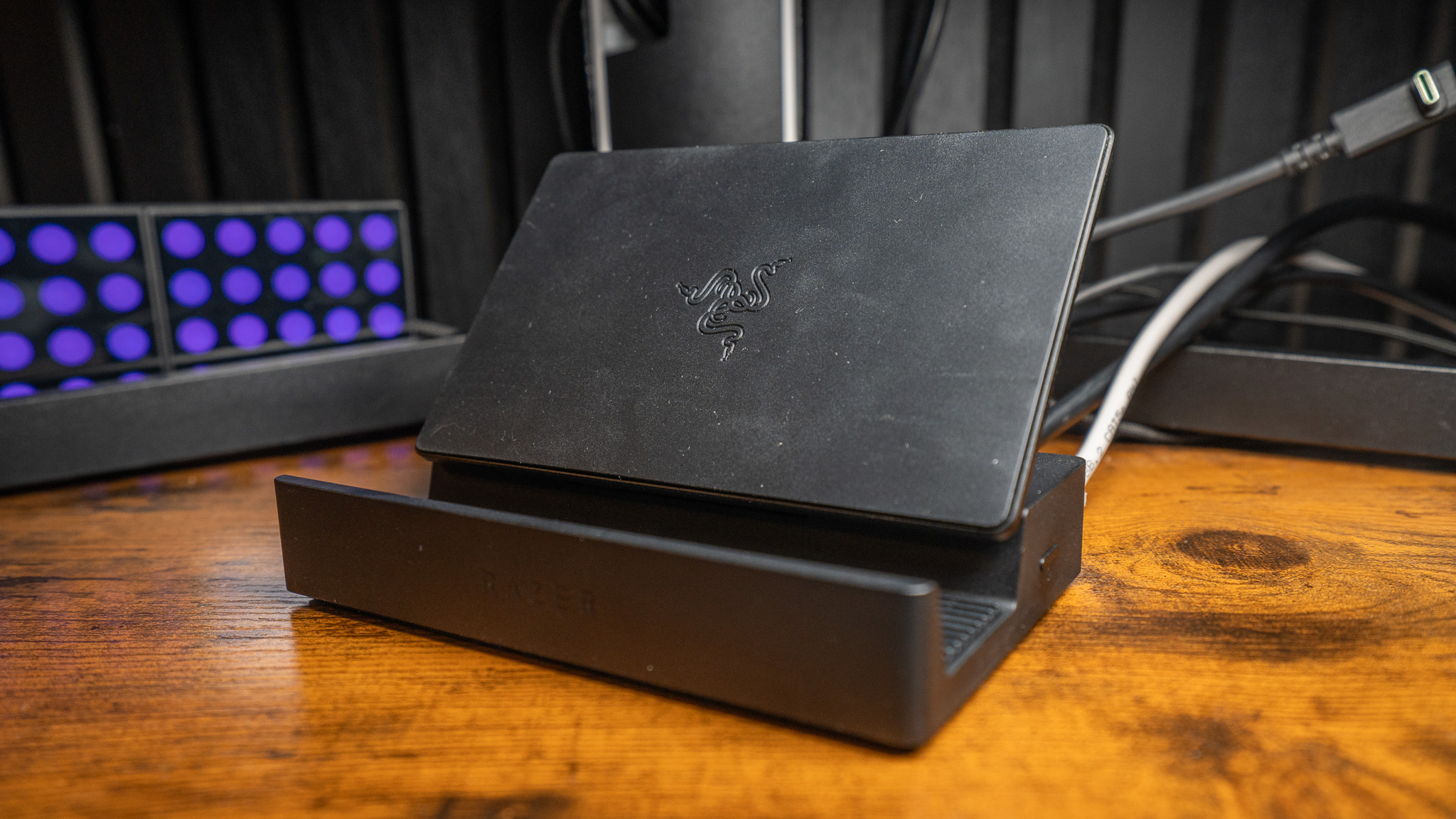
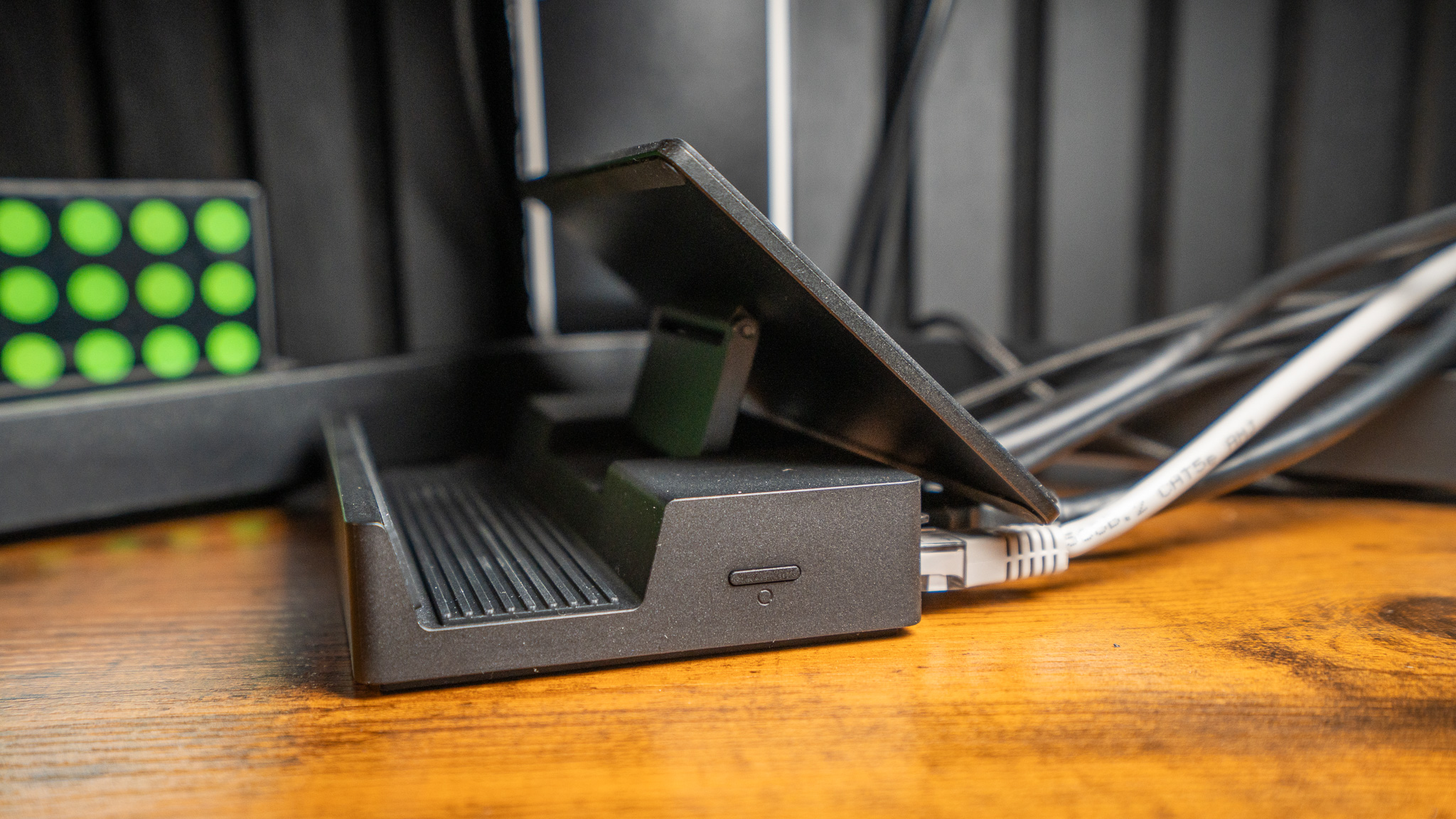
Few handheld docks feature this kind of folding design, but the iVANKY 14-in-1 RGB is a comparable option — when it’s on sale. Now, whether this feature is useful to you depends on how often you travel with your handheld. If you frequently pack up your setup for hotels, Airbnbs, or even coffee shop gaming sessions, this fold-flat design makes it easier to bring with you. It also helps if you prefer gaming on a table with peripherals attached, without necessarily hooking up an external monitor.
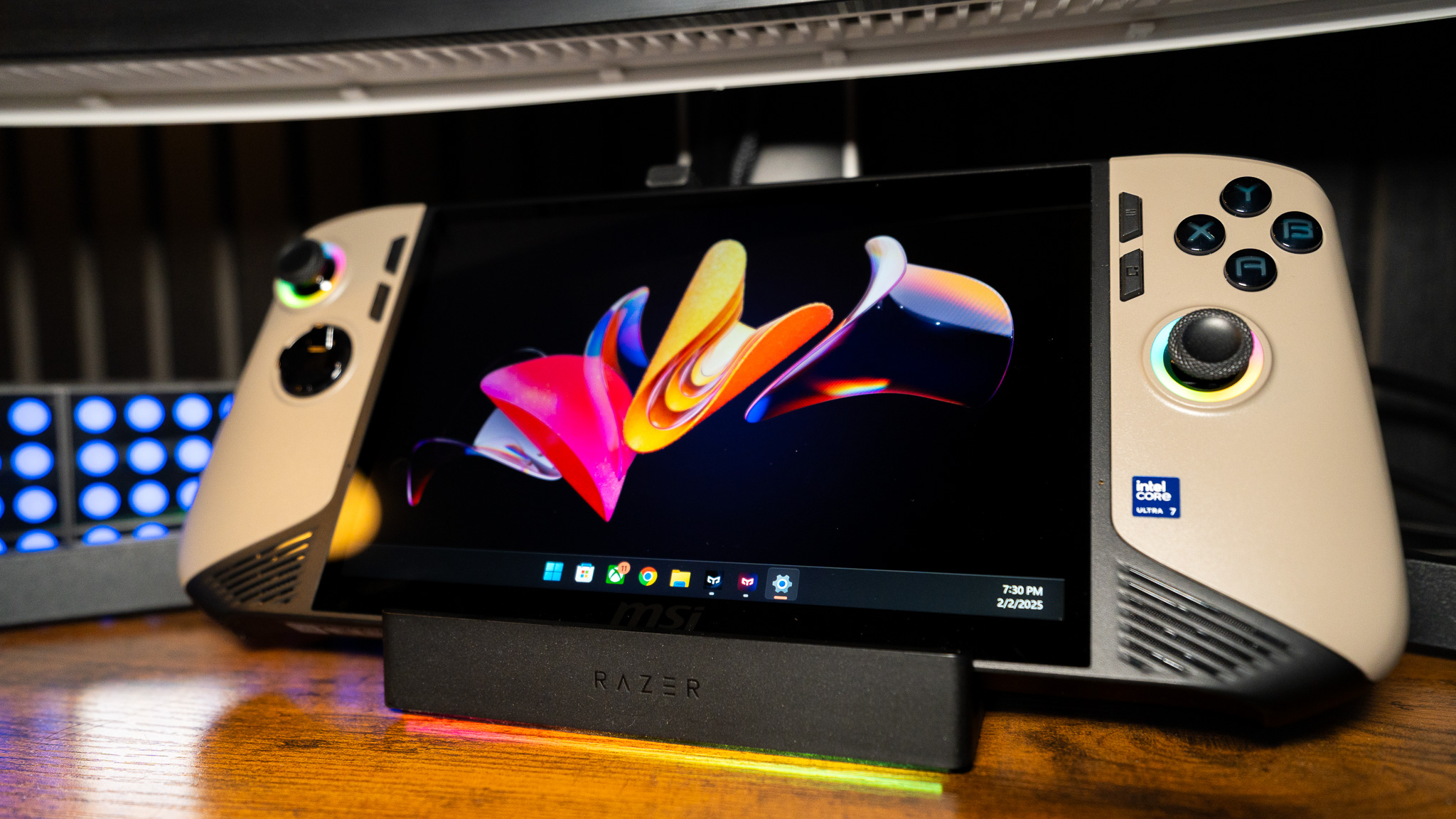
At the base of the dock, there’s a single RGB light strip that creates an underglow effect, that nicely lights whatever surface it sits on. Very few handheld docks even offer RGB though, that same iVANKY 14-in-1 RGB dock takes things a step further with lighting that wraps around its sides too. However, unlike Razer’s dock, it doesn’t sync with other peripherals — which is a major selling point with this one.
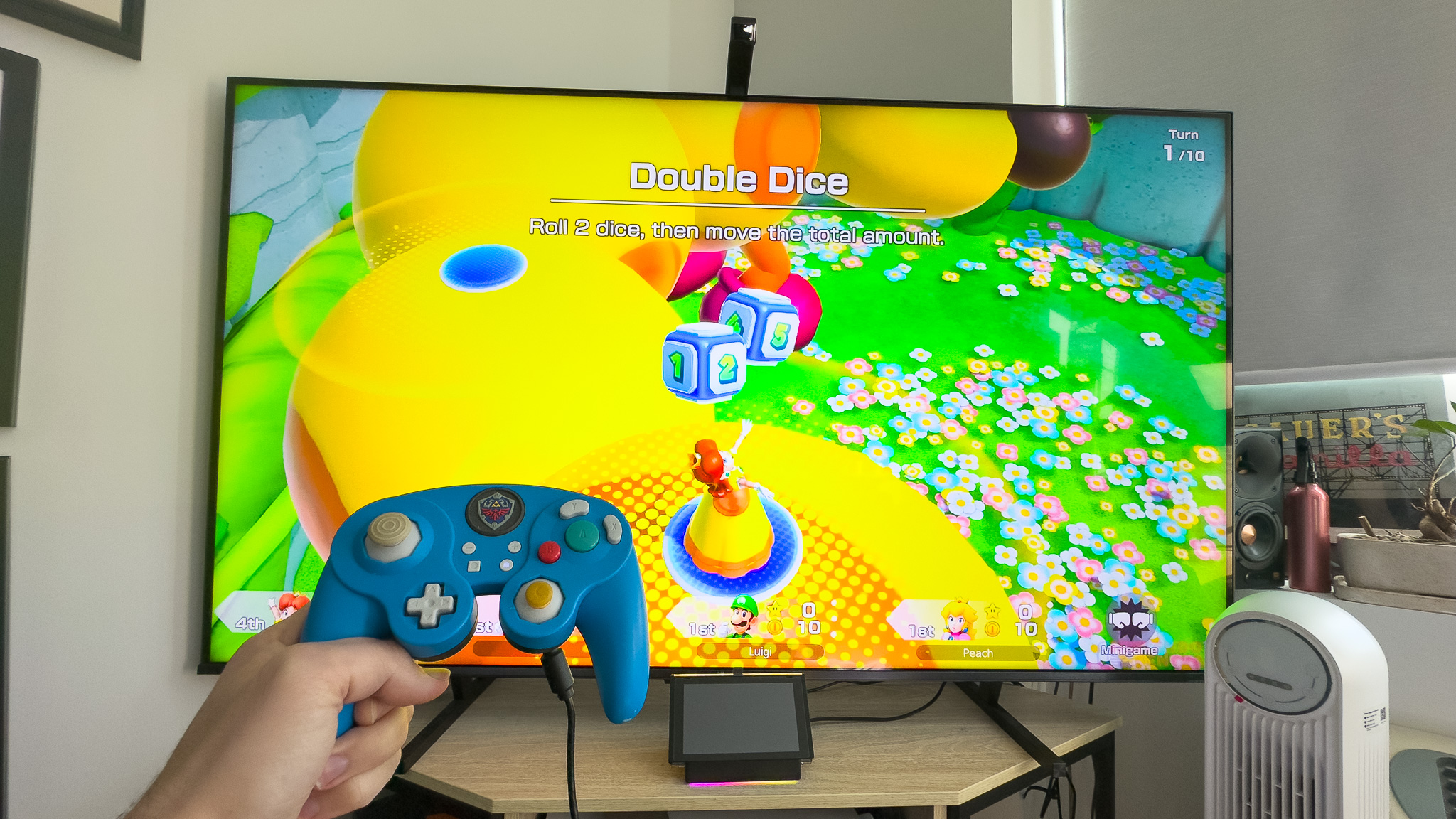
For non-Windows devices like the Steam Deck or Nintendo Switch, which don’t support Razer's Synapse software, there’s a button on the front-right side of the dock that lets you manually cycle through the built-in lighting effects. It’s a handy addition for standalone use, just keep in mind that you won’t get full Chroma syncing without a Windows device running Synapse.
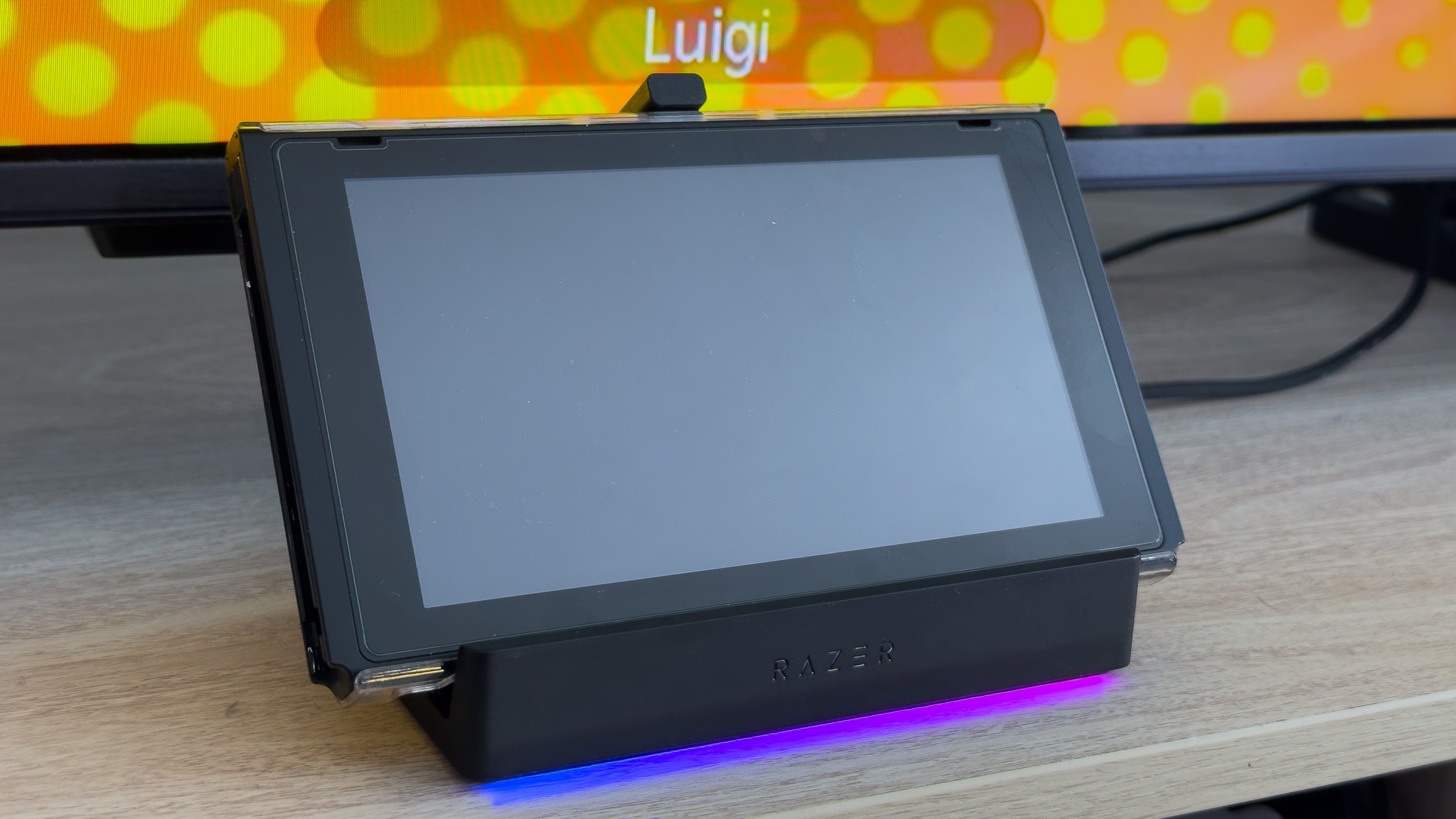
One other (minor) note, if you’re using this with a Nintendo Switch, you’ll need to flip the console upside down since its USB-C port is on the bottom. Not a big deal, but something to keep in mind.
While the included 3-in-1 USB-C cable is a good length, and even long enough to connect to larger devices like one of the best iPads, I would have preferred a detachable option. If the cable ever gets damaged or if you want to swap it for a longer or shorter one, you’re out of luck. This isn’t a dealbreaker, but a detachable USB-C cable would have added more flexibility. Despite this, the Dock Chroma is easily one of the better-built handheld docks out there.
Lighting effects
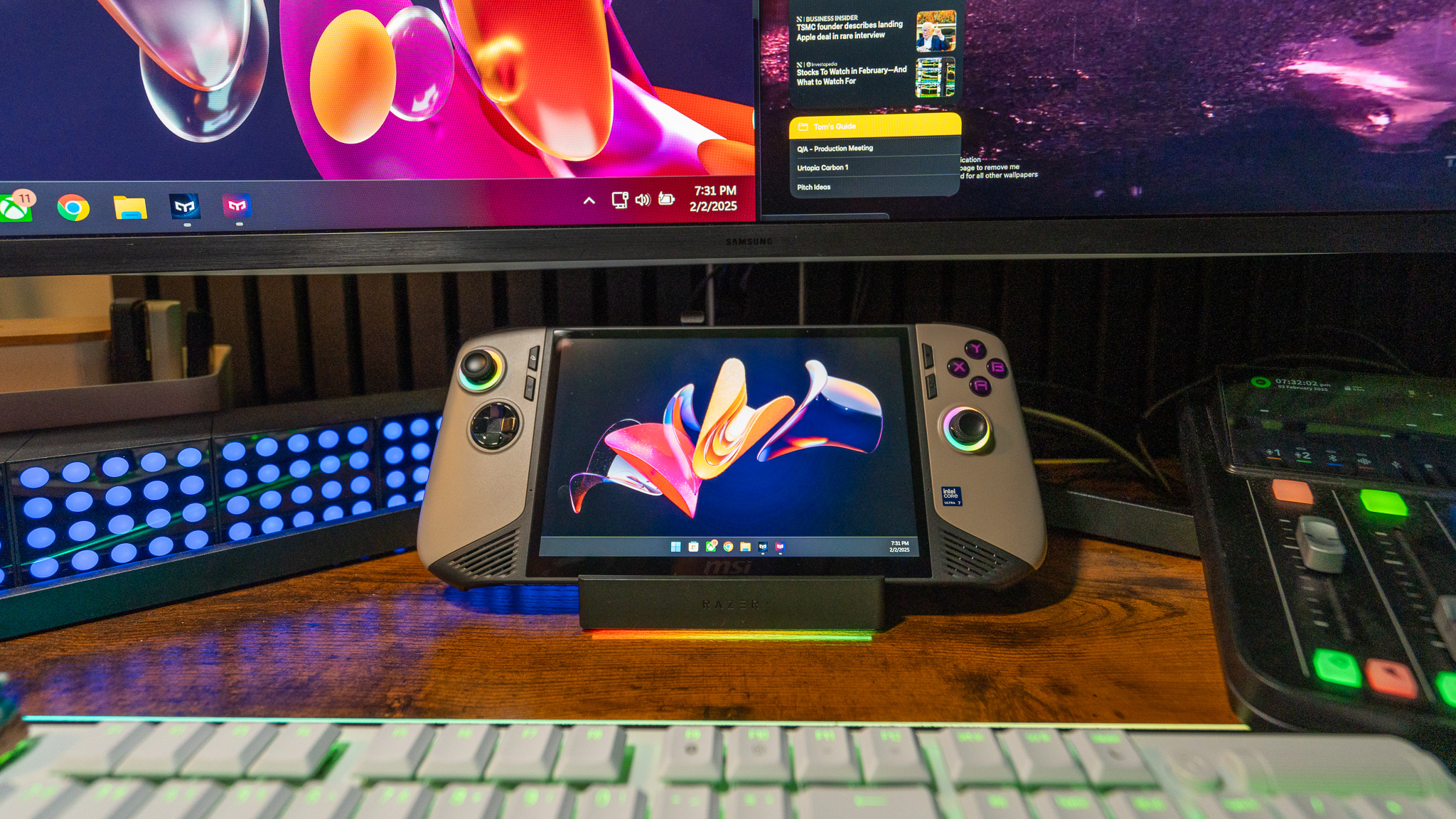
Through Razer Synapse, you can customize the lighting effects on the dock or sync it with other Chroma-enabled devices like mice, keyboards, mousepads, and even smart lights.
When everything is in sync with effects like Wave, Breathing, or Wheel, the result is a gorgeous, immersive lighting setup. Where this really shines is game-reactive lighting for supported PC titles like Overwatch 2. From matching the lighting to your hero’s skin to having your entire room glow when you activate an ultimate, Chroma integration truly elevates the experience. It’s a major reason why I’ve continued upgrading my desktop setup with Razer gear, including the Basilisk V3 Pro, DeathStalker V2 Pro, and the Strider Chroma mouse pad.

Even if you’re not using Razer Synapse, a hidden button on the front right of the dock lets you manually cycle through built-in lighting effects. This is especially useful if you’re using it with a Steam Deck, Nintendo Switch, or any device that doesn’t support Synapse. You won’t get full Chroma syncing, but you still get a nice RGB accent without needing additional software.
That said, lighting effectiveness depends on placement. If you keep your handheld tucked behind a monitor stand, the effect can be obstructed. You’ll likely want the dock front and center for maximum impact.
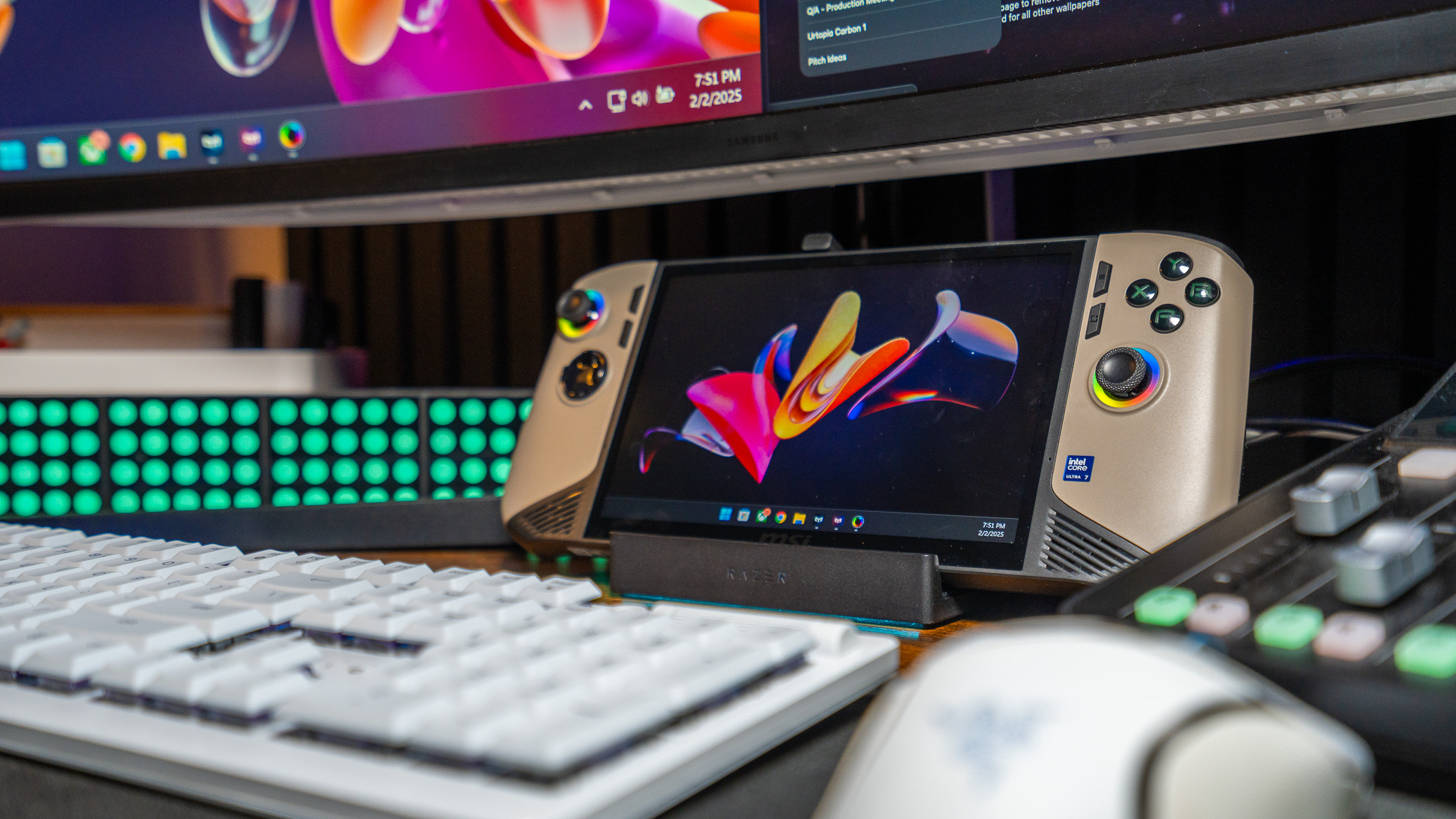
For those who prefer gaming from a couch, placing it under or in front of a TV could add a subtle RGB glow—but there’s a caveat. Since the dock is small, the light bar alone may not be enough to dramatically change the ambiance, especially in a well-lit room or if you’re sitting further from the TV.
Personally, I think Razer missed an opportunity by not lighting up the front logo, but considering how that could have increased the price, maybe it’s for the best!
Razer Handheld Dock Chroma: The downs
The Razer Handheld Dock Chroma has a lot going for it, from its premium build to its foldable design and Chroma lighting integration. But when it comes to price versus features, it’s hard to ignore that several alternatives offer more for less — if you don't mind ditching the cool synced lighting effects.
Alternative docks you might want to consider

The Razer Handheld Dock Chroma comes at a premium, and while it offers a sleek design and a solid build, it’s hard to ignore that other docks provide better specs for the same—or even less—money. At $80, it positions itself against Valve’s Steam Deck Dock, another premium option, but the Steam Deck Dock has some notable advantages. It features USB-A 3.1 Gen 1 ports, which are faster than Razer’s USB 3.0, and more importantly, it includes DisplayPort 1.4, allowing for multi-monitor setups with FreeSync (VRR). That’s a rare feature in handheld docks and could be a major advantage if you need a dual-display setup.
Additionally, the Steam Deck Dock includes a 45W charger, the same one that comes with the Steam Deck, while Razer’s dock does not include a power adapter at all. Razer does support 100W power delivery, which is better for more powerful handhelds, but if you don’t already own a high-wattage charger, that’s an extra cost to factor in.
Then there are the even cheaper alternatives, like the iVANKY 8-in-1, which costs $50, or even less on sale, and offers identical ports to Razer’s dock but with HDMI 2.1 support, allowing for 4K at 120Hz. Most gaming handhelds won’t push that high of a frame rate at 4K, but it’s still a more future-proof option if you plan to use the dock with more powerful hardware, such as a laptop, or want something that will keep up with future handheld releases.
The iVANKY 14-in-1 RGB I mentioned earlier typically sells for $130 but often drops to $80 on sale—the same price as Razer’s dock. It features a folding design, RGB lighting that wraps around the entire dock, more ports, and 4K 120Hz support. While its RGB effects aren’t as customizable as Razer’s Chroma, you’re still getting more functionality and power for the same price.
How useful are its lights?

One of the standout features of the Razer Handheld Dock Chroma is its RGB light strip, but the real question is: does it justify the extra cost? As mentioned earlier, the usefulness of these lighting effects depends on where you place the dock and whether you already own or plan to invest in other Chroma-compatible devices like the new Razer Monitor Stand Chroma. If the dock sits on a TV stand or in a large living room, the small front-facing light bar likely won’t have much impact. On a desk setup, it can look great, but it truly shines when synced with other Chroma-enabled peripherals.
That’s where Razer had the potential to make this dock feel even more premium — a simple addition, like making the front-facing Razer logo light up, would have gone a long way in making it stand out as a centerpiece of a setup. Personally, as someone who already owns a Razer mouse, keyboard, and mousepad, this dock integrates seamlessly into my setup and feels like a natural addition, and as such, I'm willing to pay more for it. But for those who use non-Razer peripherals or don’t plan on investing in Razer’s ecosystem, it’s hard to say that it's built-in RGB lighting alone justifies the higher asking price.
Razer Handheld Dock Chroma: Verdict
Razer’s premium pricing for accessories is nothing new, and the Razer Handheld Dock Chroma is no exception. Its compact form factor and built-in stand make it a convenient option, especially if you plan on taking it on the go. While the port selection isn’t the most robust, for most gamers, it covers the essentials: letting you easily connect an external display and peripherals without extra clutter.
On the other hand, if you’re looking for a more full-featured desktop replacement, the lack of HDMI 2.1 and additional USB-C connectivity might be a dealbreaker with many alternatives offering better port selection for much less.
At the end of the day, the decision comes down to two things: Do you want a semi-adjustable stand built-in? And are you willing to pay a premium for Razer’s signature RGB lighting? For many, the $30–$40 markup over non-RGB docks is worth it just to expand their Chroma ecosystem. Once you sync at least two or three Razer devices together — especially with game-reactive lighting effects — it can truly elevate your desk setup.

Paul Antill is a Video Producer and Content Creator at Tom's Guide, specializing in video/audio recording, smart home technology, and laptops. His passion lies in making tech coverage not just informative but also fun and accessible to everyone answering the question “Why does this new product or feature matter to me?” Paul has been a tech host and video producer since 2019 where he has also covered major tech and gaming events. His love for tech and video began on his YouTube channel where for the low price of one subscription he shares head-to-head comparisons and clever ways to make the most of your gear. You can also see the behind-the-scenes and the magic that goes into our Tom’s Guide videos over on his Instagram. Paul graduated from the Mason School of Business at William & Mary, Williamsburg, VA, with a degree in Marketing and Business Analytics. When he's not on camera, you’ll probably still spot him behind one doing street photography and videography. Back home he’s probably in a heated Overwatch 2 match with his friends.
You must confirm your public display name before commenting
Please logout and then login again, you will then be prompted to enter your display name.
